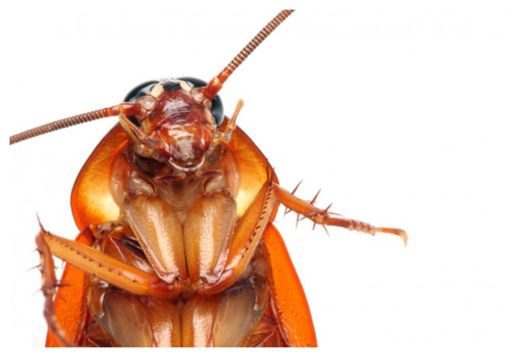
© Thinkstock
Researchers from North Carolina State University (NCSU) have found a way to turn cockroaches into cyborgs and have them assist in search and rescue operations after major disasters.
By wearing special backpacks, the "biobots" can detect and locate sound, as well as differentiating between important and unimportant sounds.
The scientists came up with two innovations, both of which involve electronic backpacks which are equipped with microphones.
One has a single microphone that can capture relatively high-resolution sound from any direction which can then be wirelessly transmitted to first responders.
The other involves an array of three-directional microphones which can detect the direction of the sound. The team also developed algorithms that can analyze sound from the microphone array to focus the source and steer the biobot in the right direction.
The microphone array system worked successfully in laboratory testing, as shown in a video below.
"In a collapsed building, sound is the best way to find survivors,"
said Dr. Alper Bozkurt, an assistant professor of electrical and computer engineering at NCSU and senior author of two papers on the project.
"The goal is to use the biobots with high-resolution microphones to differentiate between sounds that matter - like people calling for help - from sounds that don't matter - like a leaking pipe," Bozkurt added. "Once we've identified sounds that matter, we can use the biobots equipped with microphone arrays to zero in on where those sounds are coming from."
The researchers also developed technology to create an "invisible fence" for the biobots, ensuring that they remain within the required area and do not wander off. Keeping the biobots within range of each other also means that they can be used as a reliable mobile wireless network, and the technology could additionally be used to recharge the miniature solar panels on their backs by directing them to light sources.
As redOrbit reported last year, a
startup project used similar technology in conjunction with smartphones and apps to educate people about brain stimuli, and how bodies respond to it. RedOrbit's Lee Rannals explained that by observing cockroaches fitted with the tech, "Users will be able to experience in real-time how the brain responds to sensory stimuli. They will also see how the brain is able to learn and adapt."
Rannals also
reported that video game technology, in the form of Microsoft Kinect, could be used to control cockroach cyborgs, and was likewise being investigated by NCSU. Dr. Alper Bozkurt was quoted at the time as saying, "Our goal is to be able to guide these roaches as efficiently as possible, and our work with Kinect is helping us do that. We want to build on this program, incorporating mapping and radio frequency techniques that will allow us to use a small group of cockroaches to explore and map disaster sites."
The technology has been tinkered with, and the target of employing cockroaches in disaster situations is now moving closer. Much maligned as creatures, cockroaches could one day be seen as heroes.
redOrbit reported on another project from the NCSU team in August in which Dr. Bozkurt's team announced that they had developed a way to
convert moths into miniature drones by electronically manipulating their flight muscles and monitoring the signals the insects use to control them. "In the big picture, we want to know whether we can control the movement of moths for use in applications such as search and rescue operations," said Dr. Bozkurt at the time.
So they want to give people the ability to control living creatures via a video-game/remote control interface "for the good of mankind"? How long before we move up to lizards, then the less popular mammals, and maybe even the more popular ones? It's not out of the question, is it?
Another thing: I don't think roaches will be "seen as heroes". This is a method of slavery, and it is the human "owners" of these technologies that will take any credit, as always. "Great, someone finally managed to put those disgusting things to use!"